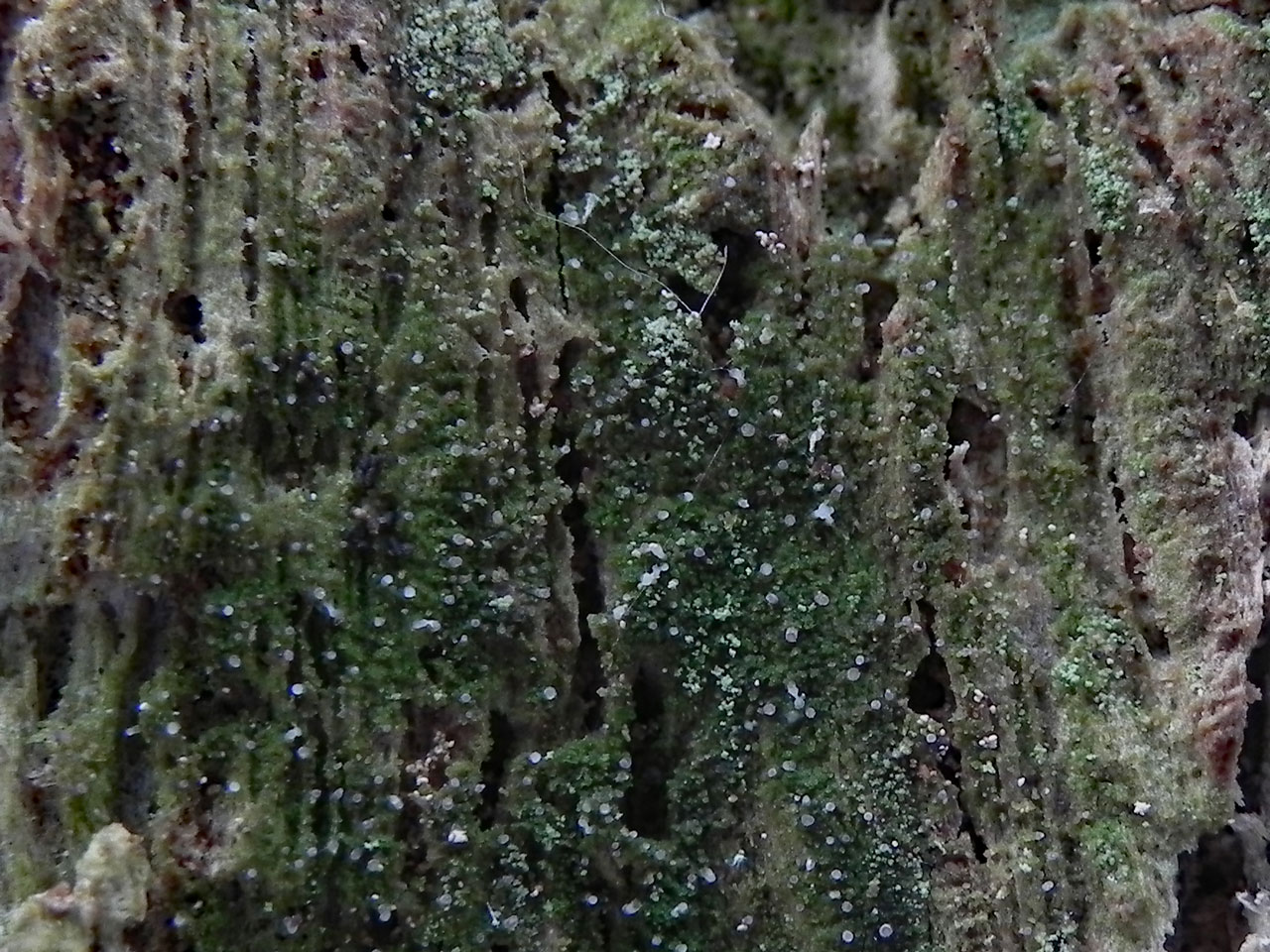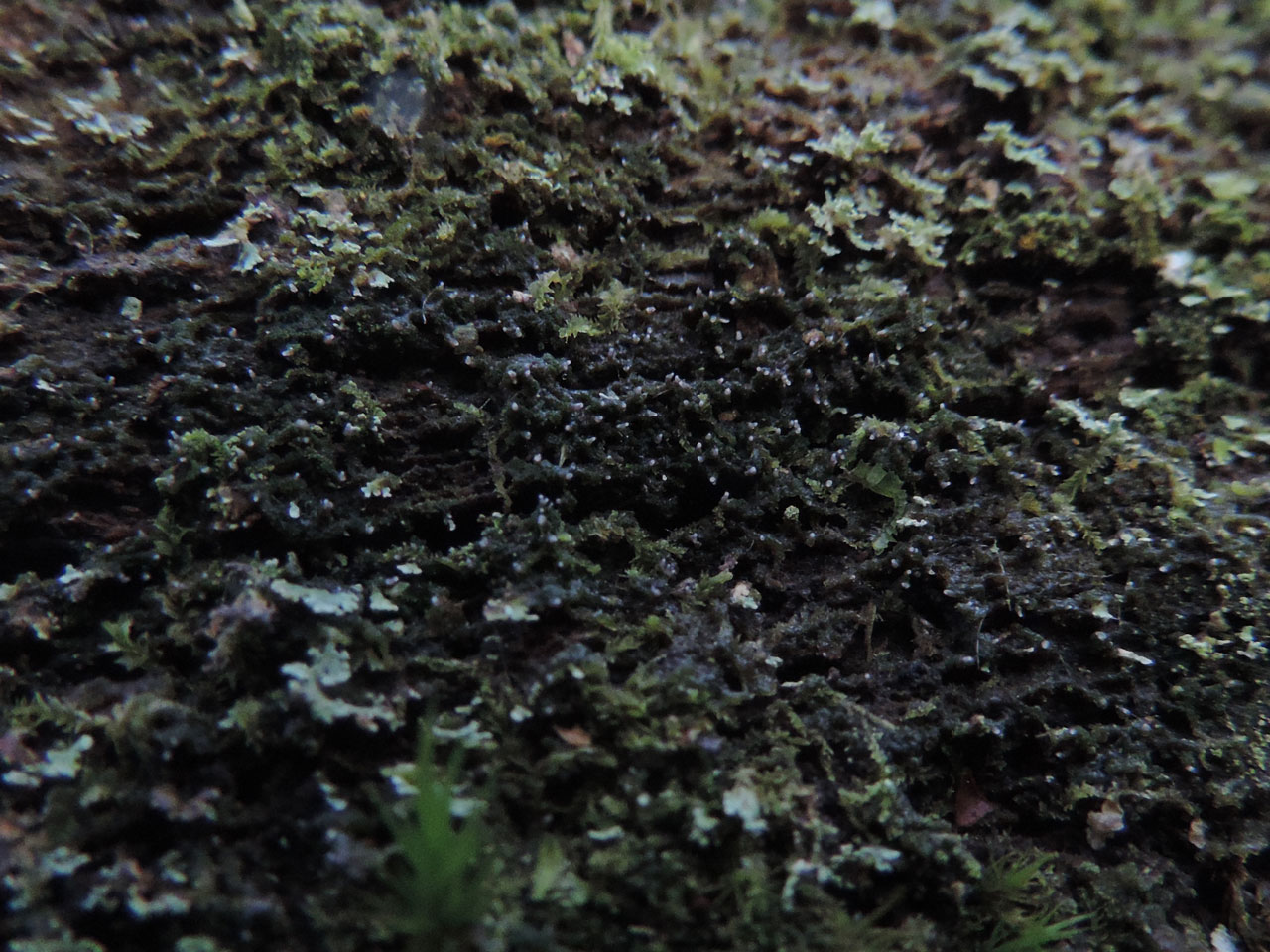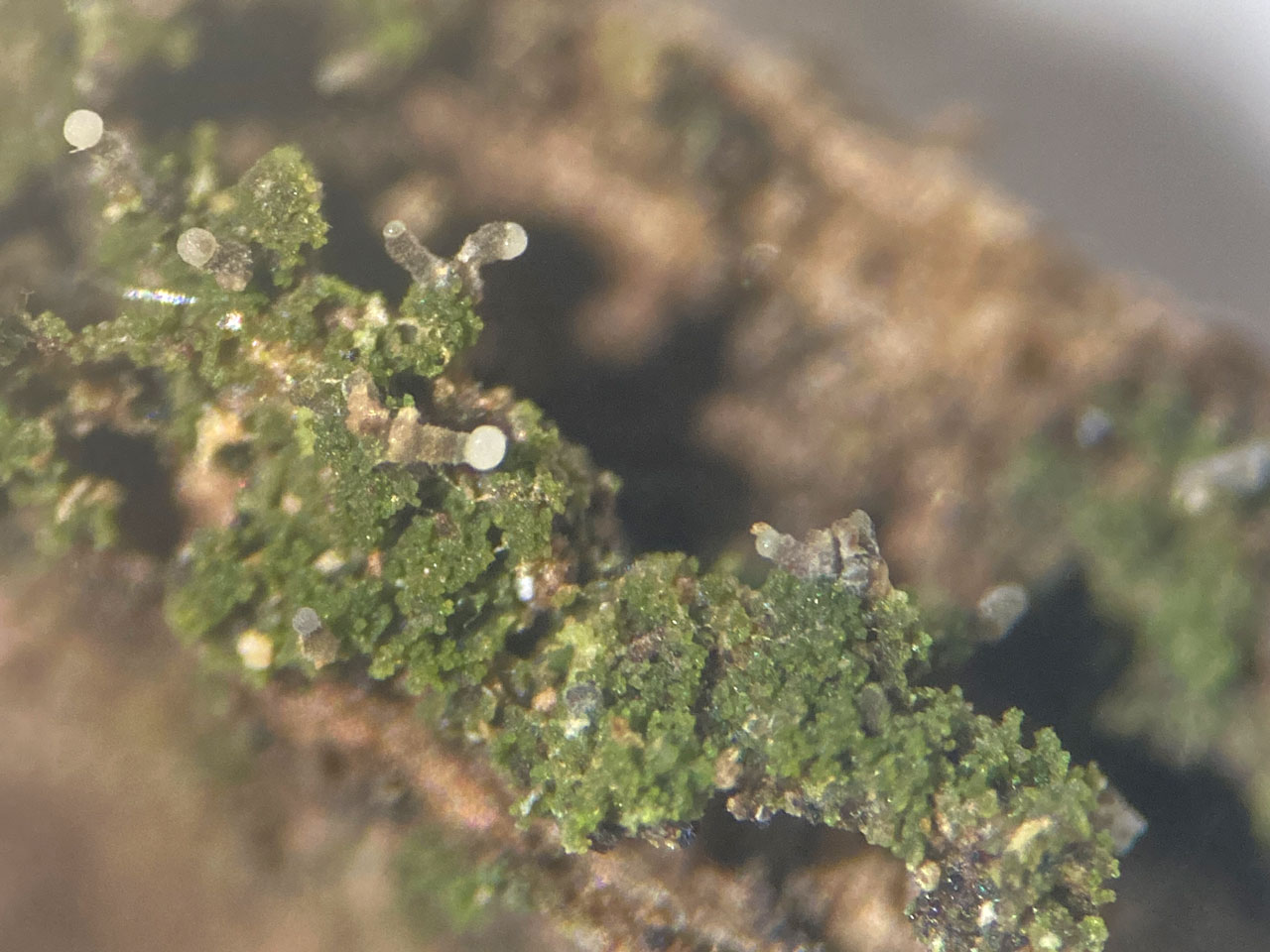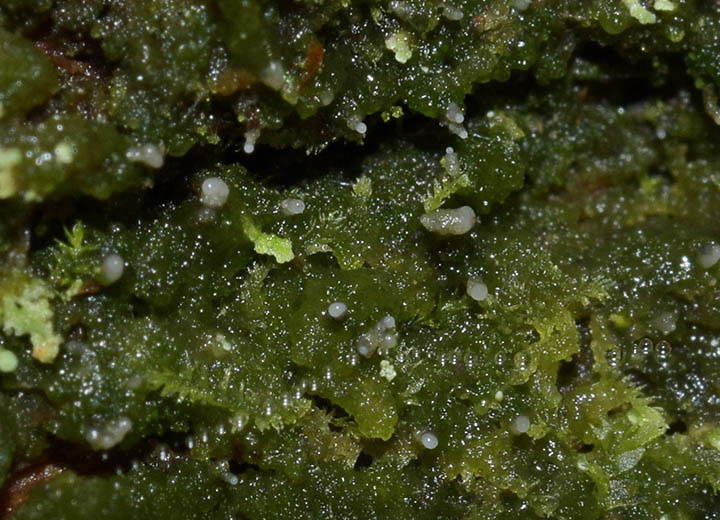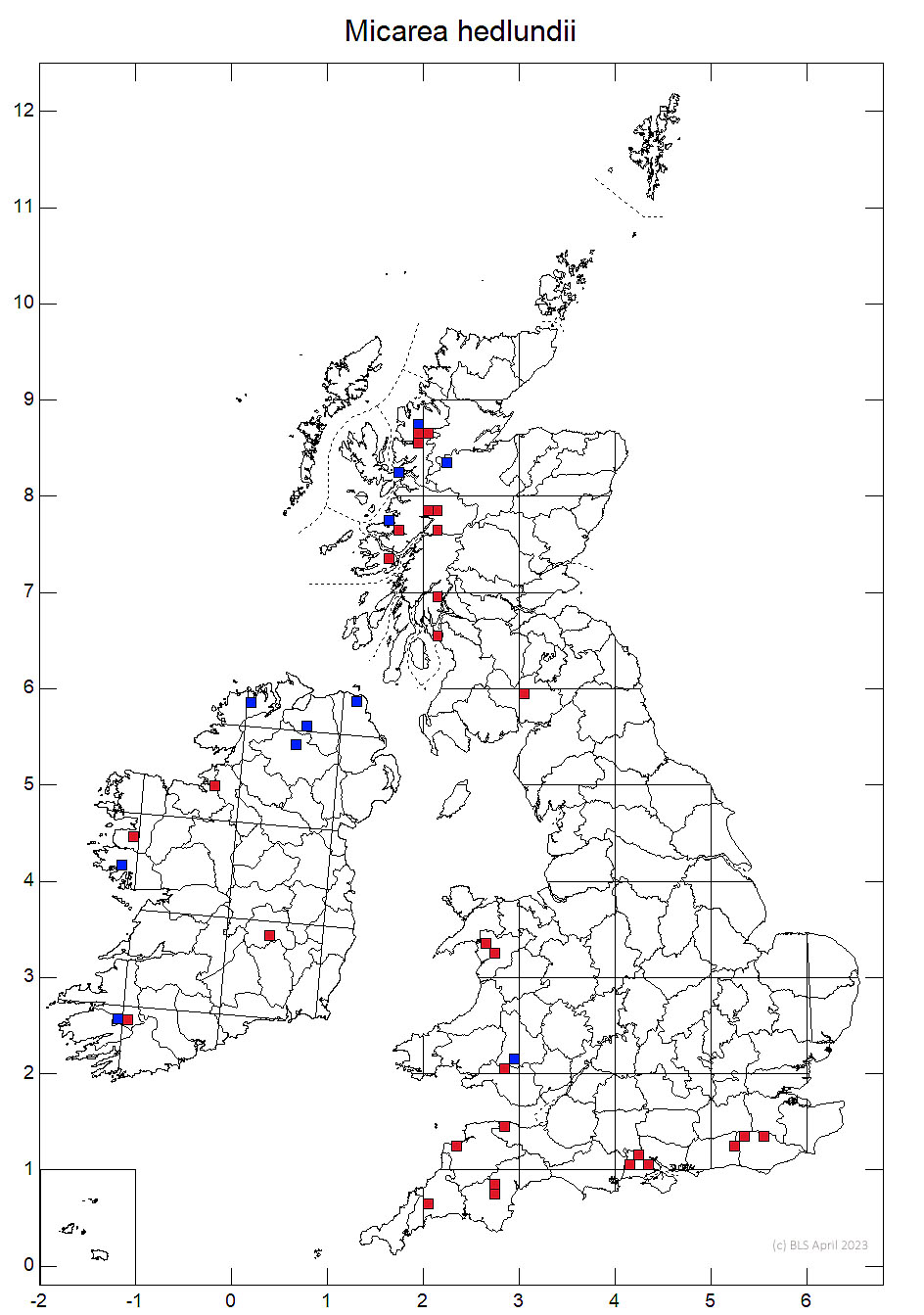Micarea hedlundii
This member of the difficult Micarea prasina group is among the most distinctive, with, once spotted, rather striking brown stalked pycnidia which are thinly white-tomentose. To be searched for on damp lignum on large hulks of dead trees, fallen or standing, in old growth woodlands in oceanic areas. An unexpected alternative habitat, first discovered in 2013, is on damp soft sandstone in outcrops of the Wealden Sandrocks, where it may be widespread.
Thallus similar to Micarea prasina: dull, darkish green, with goniocysts 25–35 μm diam. that usually contain a yellowish K± and C± purple-violet pigment (as oily droplets). Apothecia often absent, 0.2–0.4 mm diam., grey-brown to dark dull brown, convex to subglobose, sometimes tuberculate and then to 1.0 mm diam.; true exciple poorly developed; hymenium 35–45 μm tall, colourless or with pale straw-brown epithecium and vertical streaks, K± violet, C± violet; hypothecium 80–130 μm tall, colourless to pale straw; paraphyses scanty, 0.8–1.5 μm diam., branched, scarcely swollen above. Asci 35–40 × 9–12 μm. Ascospores 6.5–10 (–12) × 2.5–4 μm, ellipsoidal, cylindric-ellipsoidal or cylindric-ovoid, 0- or rarely 1-septate. Pycnidia numerous, stalked, brown, thinly white-tomentose, 0.1–1 mm tall, 70–140 μm diam., the stalk often branched, with up to 5 pycnidia; mesoconidia (4–) 4.5–5.5 (–6) × 1.2–1.7 μm, cylindric-ellipsoidal or cylindric- ovoid. Lichen products not detected by TLC.
Distinguished from other members of the Micarea prasina group by its generally darker thallus, its stalked brown whitish-tomentose pycnidia and the usual presence of yellowish (K± purple-violet) oily droplets in the gelatinous matrix of the goniocysts.
On lignum in shaded or humid situations in ancient Oak or Pine woods, typically on large hulks of dead wood, standing or dead, but also found on soft damp sandstone (sandrock) in the Weald (E. Sussex) in 2013 and since found on most large sandrock outcrops examined.

Rare S. and S.W. England, N. & S. Wales, Scotland (Highlands), W. & N. Ireland.
A very localised species mainly found in well developed old growth woodland and on unusually and rare types of sandstone. Relatively shade tolerant but was threatened by deep shade from Rhododendron and native species on sandrock sites, although the best sites are now under conservation management. In old woodlands, under grazing can lead to deep shade as well, with fallen dead wood especially vulnerable to overgrowth and shading by coarse vegetation.
Britain: Near Threatened
Scotland: Priority Taxon for Biodiversity in Scotland
Wales: Near Threatened
Cannon, P., Orange, A., Aptroot, A., Sanderson, N., Coppins, B. & Simkin, J. (2022). Lecanorales: Pilocarpaceae, including the genera Aquacidia, Byssoloma, Fellhanera, Fellhaneropsis, Leimonis and Micarea. Revisions of British and Irish Lichens 27: 1-48.
Text by Neil A Sanderson based on Canon et al (2022)
